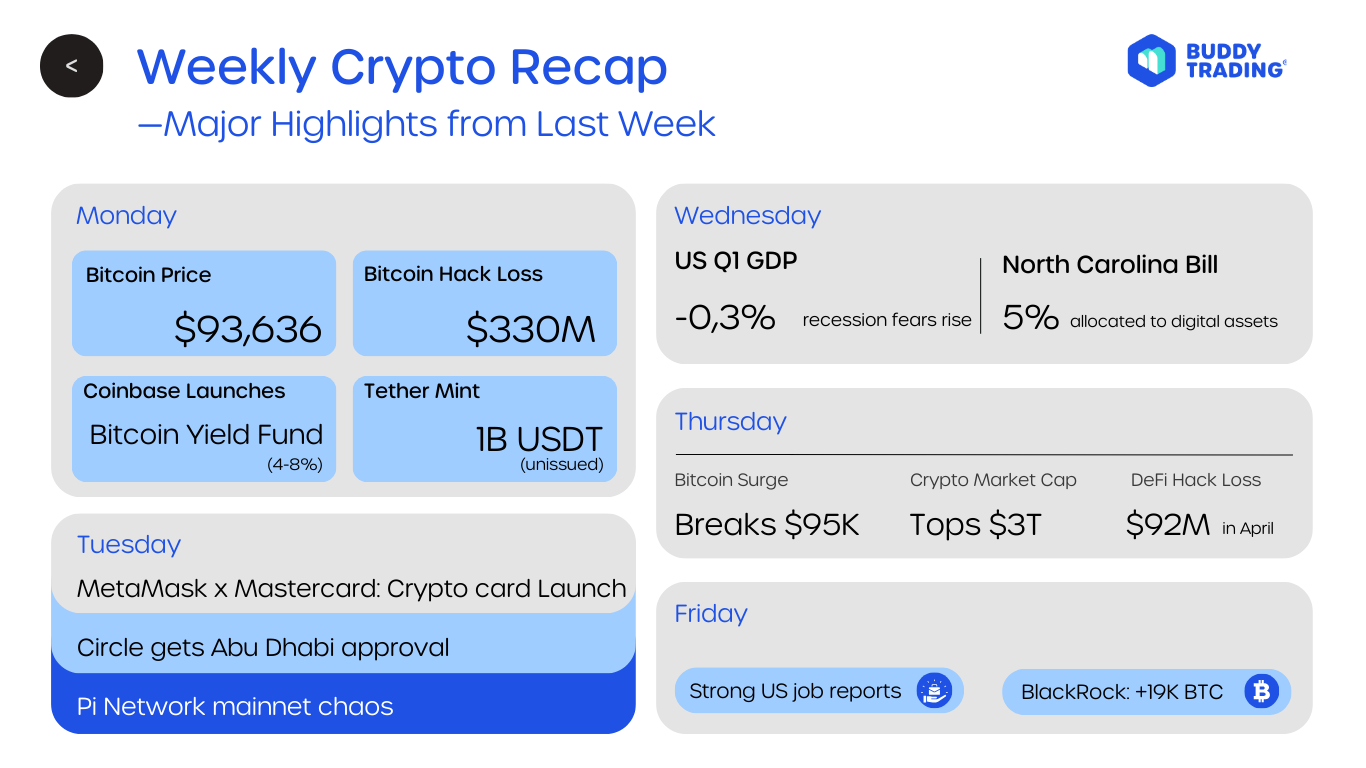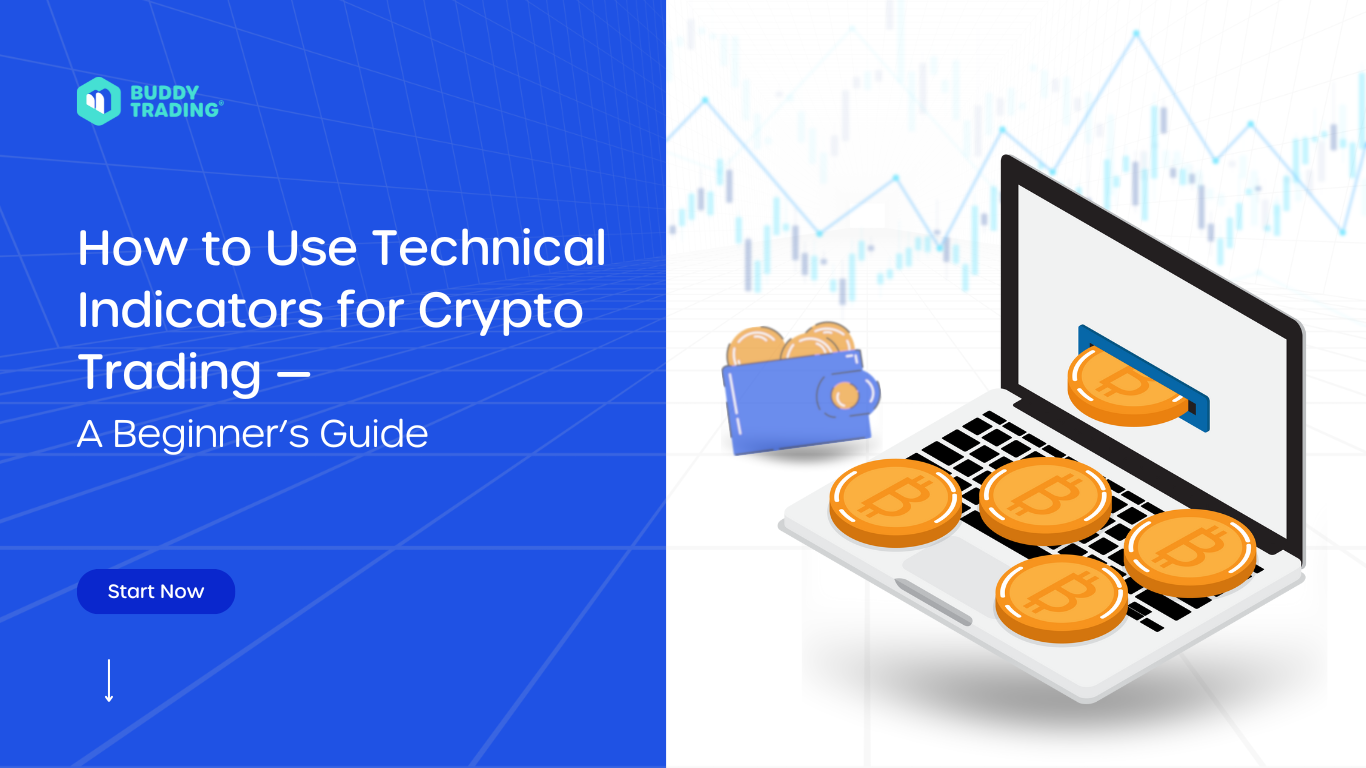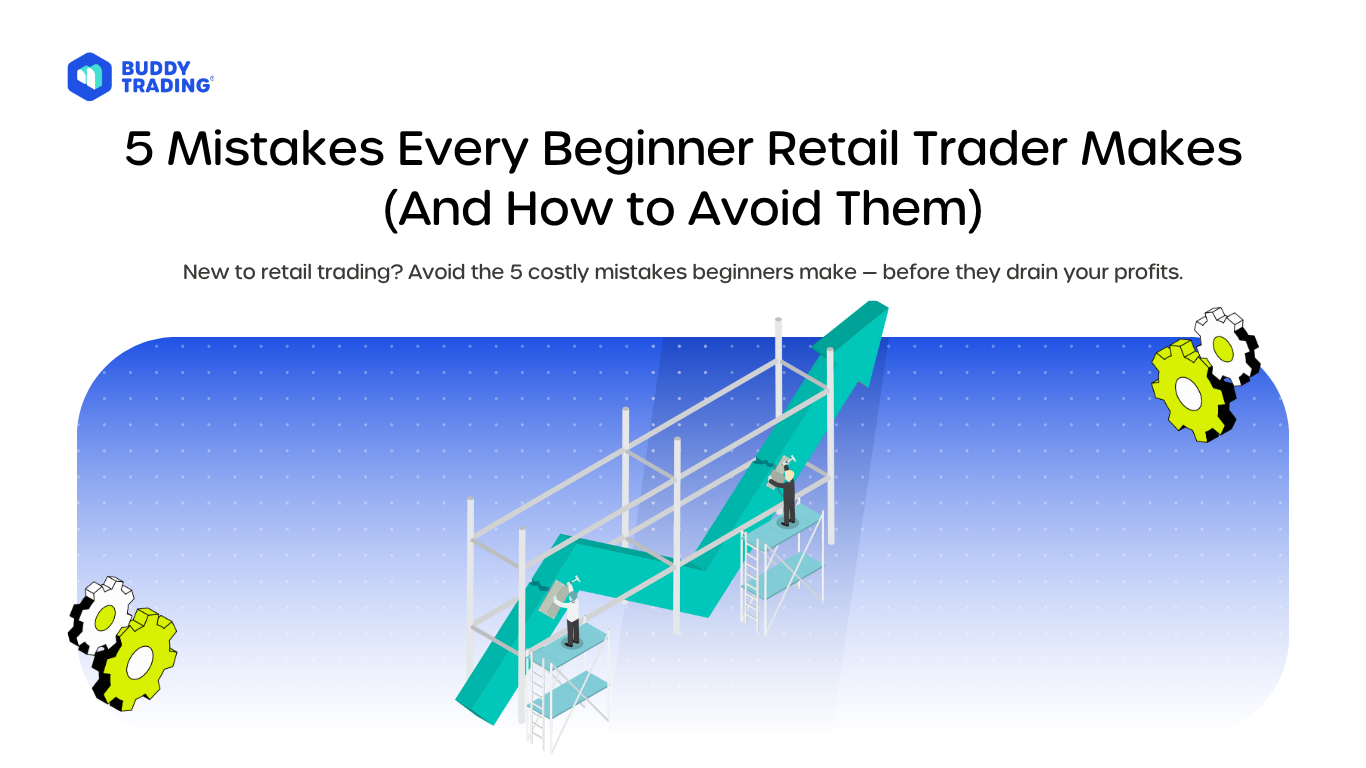The first week of May delivered another rollercoaster for crypto investors. Bitcoin extended its rally, crossing impressive price milestones, while the overall crypto market surged past the $3 trillion mark for the first time since February, signaling renewed bullish sentiment.
 Our Blog
Our Blog
Understanding Market Volatility: How to Make Smart Trades During Market Swings

Crypto markets are famously volatile, prices can soar or crash within minutes. While this can feel intimidating, experienced traders know volatility isn’t the enemy - it’s an opportunity.
In this blog, we’ll break down what market volatility really is, why it happens, and most importantly, how you can trade smartly during market swings.
What Is Market Volatility?
Volatility refers to how much and how quickly asset prices change over a period of time.
- High volatility → rapid price movements, large swings up or down
- Low volatility → steady or sideways price action
In crypto, volatility is often driven by:
- News events (regulations, hacks, partnerships)
- Market sentiment (fear or greed)
- Liquidity levels (thin order books amplify moves)
- Macro conditions (interest rates, global markets)
Why Does Volatility Matter to Traders?
Volatility creates both risk and opportunity.
- Big moves can wipe out unprepared traders.
- But for smart traders, it opens the door to bigger profits.
The key is knowing how to navigate the chaos without letting emotions take over.

5 Smart Tips for Trading During Volatile Markets
1. Size Your Positions Carefully
In volatile markets, one of the biggest mistakes traders make is overexposing themselves. When price swings are large, even a small percentage move can cause outsized losses if you’re too heavily positioned.
How to apply this:
- Reduce your trade size during high-volatility periods - smaller positions lower your risk if things go wrong.
- Use percentage-based risk management: for example, never risk more than 1-2% of your total account per trade, no matter how tempting the setup.
- Combine this with tight stop-loss orders so that if the market reverses sharply, your losses stay capped.
During wild markets, survival matters more than big wins.
2. Focus on Key Levels
Even in chaotic conditions, price often respects important technical landmarks like: support, resistance, moving averages, or Fibonacci retracement levels.
These levels act as roadmaps, guiding where traders expect reactions.
How to apply this:
- Watch for bounces or reversals near support/resistance before entering a trade.
- Use these zones to set stop-loss and take-profit levels with more precision.
- Avoid trading blindly in the middle of ranges where there’s no clear edge.
Technical structure matters, even when things look messy.
3. Stick to Your Plan
Volatility triggers emotional reactions: fear (selling too soon or too late) and greed (chasing pumps or overtrading).
Winning traders know that consistency beats emotional reactions.
How to apply this:
- Pre-define your entry, stop-loss, and take-profit before you click the button.
- Keep a trading journal to track whether you followed your plan, not just whether you won or lost.
- Remember: no setup = no trade. Just because the market is moving doesn’t mean you need to be involved.
Discipline is your greatest weapon in chaotic markets.
4. Watch for Breakouts and Fakeouts
Volatile markets often break out of consolidation zones but many breakouts fail (known as fakeouts).
How to apply this:
- Look for confirmation signals like increased volume, strong candle closes, or momentum indicators.
- Avoid jumping in at the first sign of a move; wait for a pullback or retest to confirm the breakout’s strength.
- Define invalidations: know exactly when you’re wrong so you can exit without hesitation.
Successful traders aren’t right all the time, they’re just great at cutting losses quickly when they’re wrong.
5. Stay Updated, But Don’t Overreact
News drives volatility, but overreacting to every headline leads to sloppy trades.
How to apply this:
- Track reliable sources for macro news, regulatory updates, and major events.
- Let price action confirm the news before jumping in, not every headline moves the market.
- Avoid revenge trading or chasing after missing a move; focus on the next clear setup, not emotional reactions.
Patience pays off, especially when the crowd is panicking.
Volatility is not a curse, it’s an opportunity for prepared traders. By managing risk, respecting key levels, sticking to your plan, filtering fakeouts, and staying calmly informed, you can turn swings into opportunity.
Want to see how top traders navigate volatile markets? Explore strategies and follow real traders on BuddyTrading.com today.
📢 Join the BuddyTrading community today!
🌐 Visit us: BuddyTrading.com
🐦 Follow us: @BuddyTradingApp
💬 Stay updated: https://t.me/BuddyTradingApp
🚀 Stay ahead with expert insights & real-time updates!
Related Posts
Understanding crypto charts might seem overwhelming at first, but technical indicators are powerful tools that help you make more informed trading decisions. Rather than guessing market moves, you can use these indicators to identify trends, time entries, and manage risk effectively.
Retail trading has opened the door for everyday investors to access the strategies of top-performing traders. On platforms like BuddyTrading, it’s easier than ever to connect your capital to experienced lead traders and let their decisions guide your trades. Sounds simple, right? But for many beginners, retail trading can


 3 min read
3 min read


